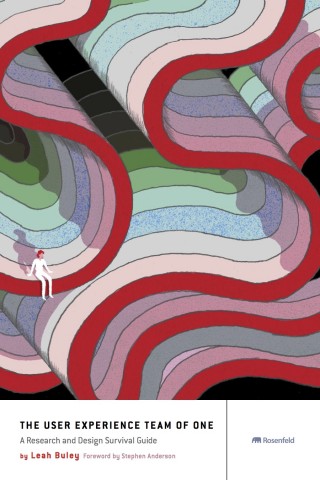The User Experience Team of One: A Research and Design Survival Guide

I’ve recently made it one of my goals to learn more about UX and design. To that end, I read a book that was highly recommended by our Grio designers, The User Experience Team of One: A Research and Design Survival Guide, by Lean Buley. The book is written for people who are or want to be UX professionals, with a focus on those who either the only person in their company working on UX or who are in some way UX evangelists in their organizations. Although the intended audience of the book is UX professionals, there were also number of tips and ideas that a company like Grio can find useful. On many projects, especially when budgets and time are tight, Grio takes on the role of UX evangelist for our clients.
Sometimes we find ourselves in a position where we have to convince a client of the value of dollars spent on UX design and user research. Buley gives a useful list of common objections to UX design and user research, and how to overcome them:
- UX work and visual design are the same thing – paying for a visual design means you are also getting a UX design.
Often clients might ask for visual design when what they really want is UX. Visual design is usually limited to the look and feel of a site as determined by the colors, fonts used, overall style. UX design goes much deeper, touching product features and functions. UX spans product development from start to finish and is much more likely to have a big impact on development and the final features of the product.
- User research is too expensive / too much time
While it might seem expensive to spend time and money up front on UX design and user research, it’s always going to be less expensive to define and solve problems before a product is in the marketplace, rather than going back to fix things later.
Additionally, Buley notes elsewhere in the book that the ideal number of users to test with is only five – testing with just five users will uncover 85% of UX problems, after which additional users will start to repeat feedback you’ve already heard. If conducting user research sounds like an expensive endeavor, its helpful to keep in mind that with a limited number of users it doesn’t have to be.
- We already know what we want to do
Clients often come to Grio with an already formed plan of what changes they want to make to their product. Buley points out that while you may have an idea of how you want to change your product and you may think that those changes are going to solve your product’s problems, without any UX research to back up those plans any changes made are really just guesses. They may be right, but they may be wrong and if they are wrong it will take more time and more money to get to the real root of the problem.
Another takeaway from the book that can be applicable to Grio is Buley’s recommendation of taking a collaborative approach to design. Buley recommends several different design / research methods, such as listening tours, Black Hat sessions, strategy meetings etc. that all involve getting people together to come up with UX solutions collaboratively. Rather than handing off the requirements and waiting for a designer to come back with a design weeks later, collaborative sessions keep all the stakeholders tightly involved in the design process. For a company like Grio, this kind of approach can transform clients from onlookers to participants in the UX process. It also gives them a window into our process so they can better understand what they are getting when they pay for “UX design”. Finally, this kind of approach helps ensure all stakeholders are agreeing on design decisions from the start and lowers the risk of having to change direction at a late design stage due to stakeholders not agreeing on the direction that has been taken.
Buley offers a lot of tips and good advice for UX designers in her book, and its also a fairly quick and easy read – I’d recommend it for anyone interested in learning more about user centered design strategies.

3 Comments